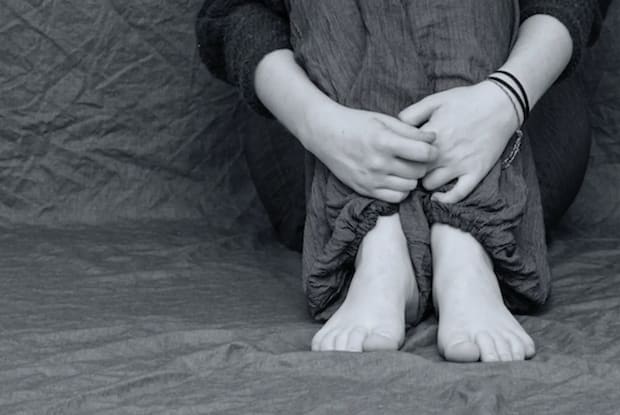Table of Contents
d. Physical and Emotional Reactions
e. Additional Childhood Symptoms
Overview
The majority of people that witness or experience a horrific and traumatic event find it difficult to cope afterward. Usually, these feelings get better with time. If you have symptoms such as severe anxiety, uncontrollable thoughts, or flashbacks that last for months or years, then you may have PTSD (post-traumatic stress disorder).
Post-traumatic stress disorder is a common mental health disorder that affects around 8 million Americans each year. Around 70 percent of American adults will experience at least one traumatic event during their life. Approximately one in five of these adults may develop PTSD. [1]
PTSD is most commonly associated with trauma resulting from wartime and was previously known as ‘shell shock’ or ‘combat fatigue.’ Anyone can develop PTSD, not just combat veterans.
Keep reading to learn more about PTSD, including the symptoms, possible causes, and treatment using therapy and medications such as Zoloft (sertraline) and Paxil (paroxetine).
What Causes PTSD?
Witnessing or experiencing a traumatic event does not necessarily mean that you will develop PTSD. Only around 20 percent of people that have witnessed or experienced events develop the disorder. There is a higher likelihood of developing PTSD if you have a history of mental health problems, relatives with mental health conditions, or if you have a history of alcohol or substance abuse. [2]
PTSD can be triggered by any extreme, life-threatening, or traumatic event. The most common events that lead to PTSD include experiencing or witnessing: There are four main categories of PTSD symptoms. Intrusive symptoms involve the patient ‘re-living’ the experience over and over again. Often when we think of PTSD, it is intrusive symptoms that we think about. Common symptoms can include distressing dreams or nightmares, vivid flashbacks, hallucinations, and recurring memories of the event. In order to be diagnosed with PTSD, patients must be experiencing at least one form of intrusive symptoms. [4] As the name suggests, avoidance symptoms involve the patient making efforts to avoid thinking or talking about the traumatic event. This can include avoiding certain situations and places or people that remind them of their trauma. This can lead to feelings of loneliness or isolation and may result in quitting hobbies or interests. [2] Patients with post-traumatic stress disorder may notice changes in their moods and thinking. This can include feelings of hopelessness, negativity, fear, guilt, shame, or a loss of happiness and other positive emotions. Their thoughts about the event itself may also be altered. Patients may wrongly place blame for the event on themselves or others. Some people with PTSD are unable to remember the event or certain aspects of it. Mood changes as part of PTSD may also lead to other mental health conditions, including depression and panic attacks. [5] PTSD can also cause alterations to a person’s physical and emotional reactions. These symptoms are also known as arousal symptoms. These symptoms can include difficulties concentrating and sleeping and an increase in aggressive, angry, or irritable behavior. PTSD patients may also start acting in a more reckless or self-destructive manner. Additionally, patients may become more paranoid or suspicious of their surroundings and become easily startled. PTSD can also cause physical symptoms such as increased heart rate or blood pressure, muscle tension, nausea, and diarrhea. [2] When PTSD occurs in young children, they may be affected by additional symptoms. These can include delayed development, especially in their language and motor skills, as well as toilet training. Other childhood symptoms can include re-enacting the event through their activities and suffering nightmares. [2] [3] Psychotherapy (or talk therapy) is very important when treating post-traumatic stress disorder. There are several different types of therapy that may be required. The aim of talk therapy is to allow you to gain control of your fear and help you manage stressful situations more easily. Cognitive therapy: Cognitive therapy helps you to overcome negative thinking and beliefs that are preventing you from coping with PTSD. Exposure therapy: Exposure therapy teaches you to cope with situations and memories that you find difficult or distressing by facing them in a safe space. Eye movement desensitization and reprocessing (EMDR): EMDR combines exposure therapy with guided eye movements. This helps you to process your traumatic memories and alter your reactions to these memories. [3] Alongside psychotherapy, your doctor may also prescribe medications to help treat PTSD. Common medications include antidepressants, such as Zoloft (sertraline) and Paxil (paroxetine). These medications can help improve sleeping difficulties and concentration while reducing symptoms of depression. Other types of medications used to treat PTSD include anti-anxiety medications and medications to suppress nightmares. The content in this article is intended for informational purposes only. This website does not provide medical advice. In all circumstances, you should always seek the advice of your physician and/or other qualified health professionals(s) for drug, medical condition, or treatment advice. The content provided on this website is not a substitute for professional medical advice, diagnosis, or treatment.
a. Common Traumatic Events
PTSD Symptoms
a. Intrusion
b. Avoidance
c. Mood and Cognitive Changes

d. Physical and Emotional Reactions
e. Additional Childhood Symptoms

PTSD Treatments
a. Psychotherapy
b. Medications
